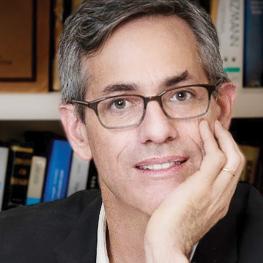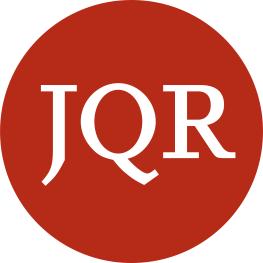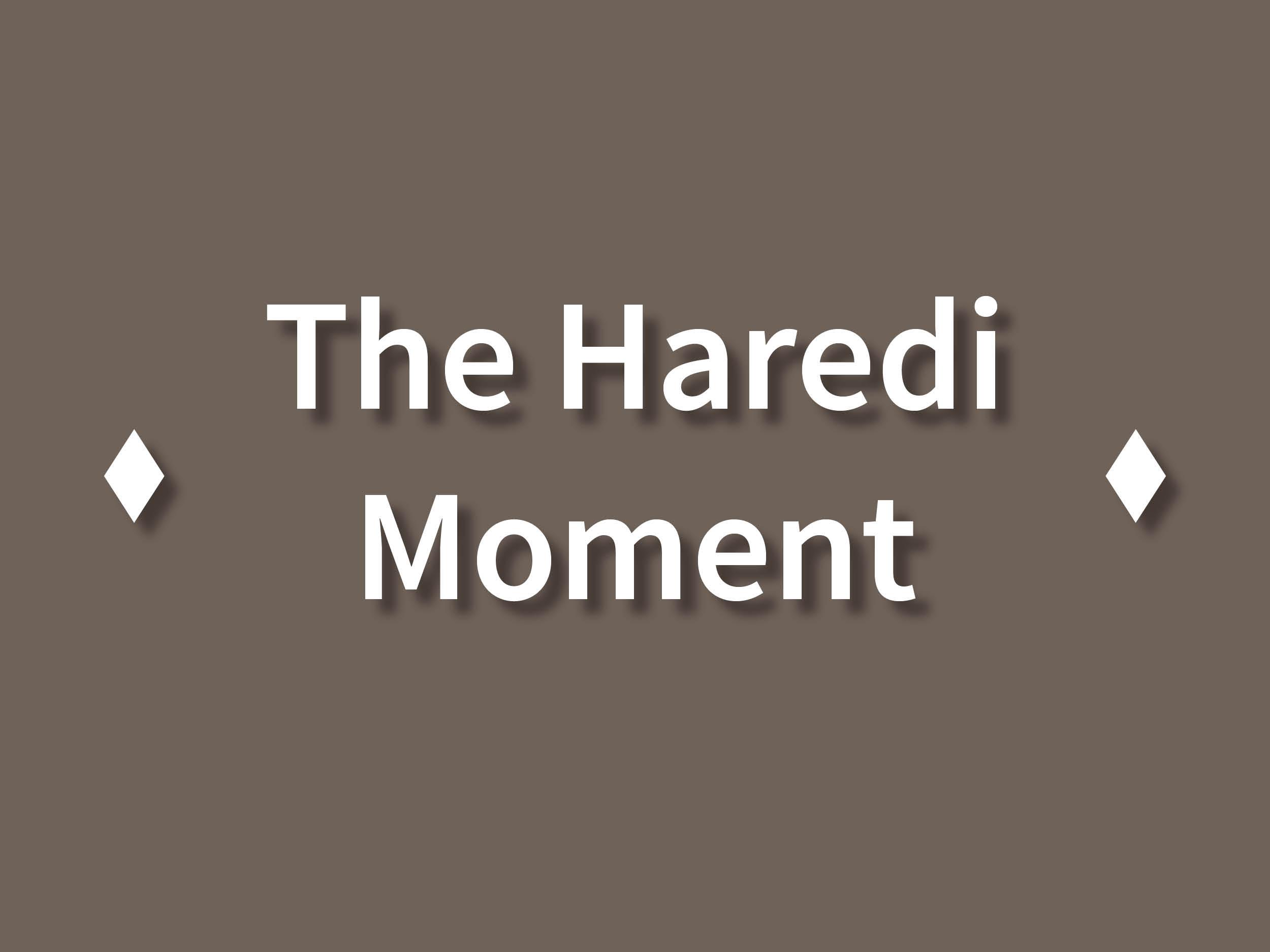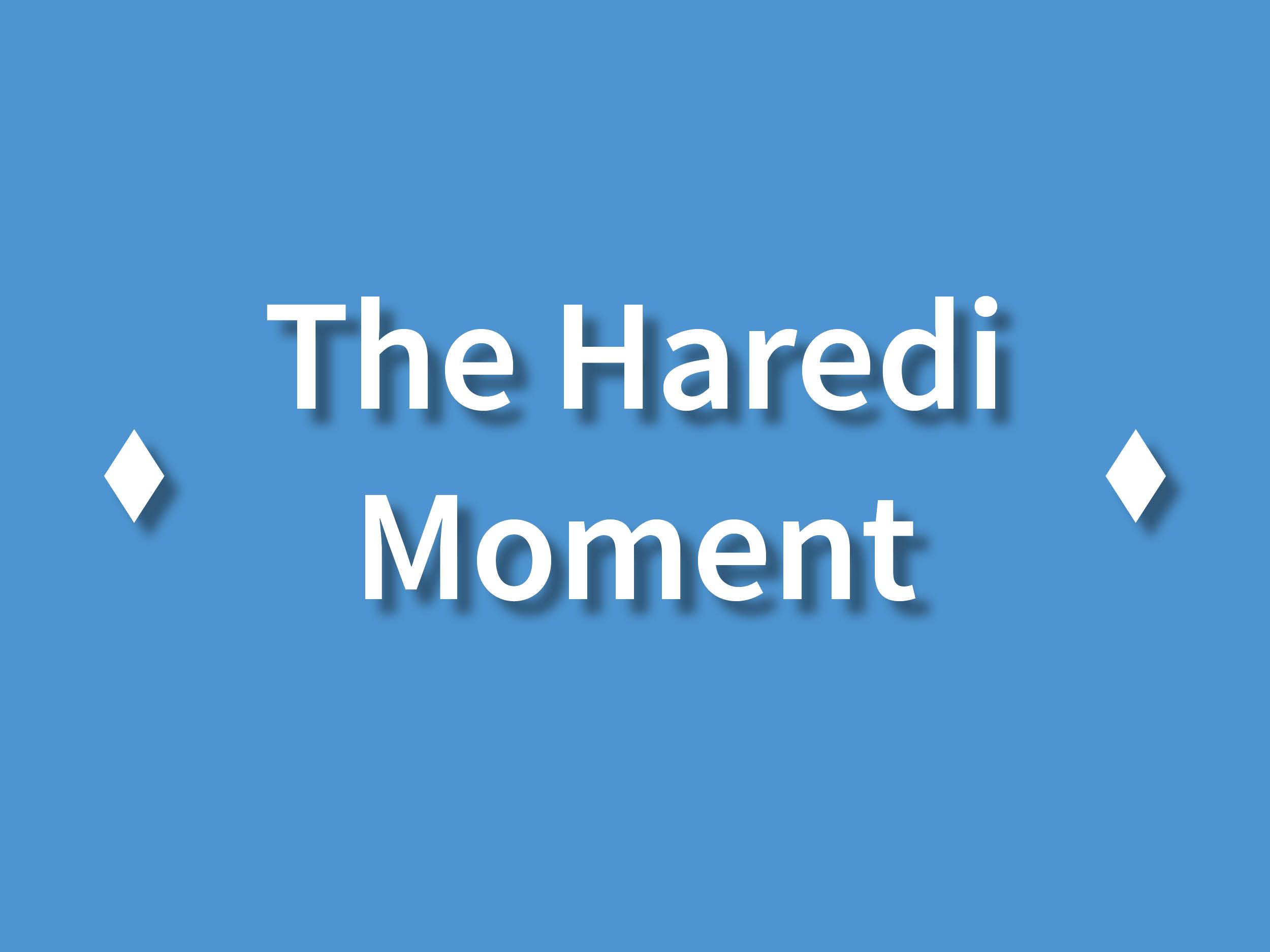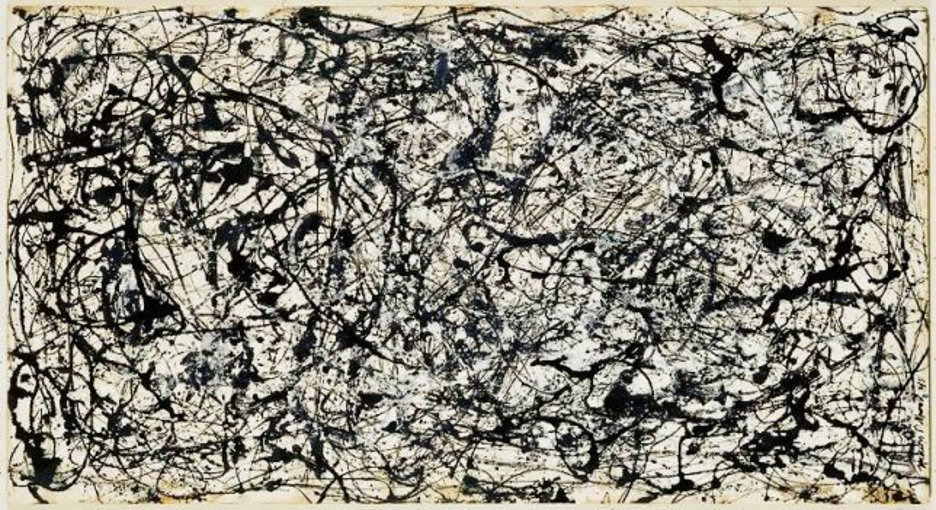The Haredi Moment: An Online Forum, Part 3
Part 3 of our forum on recent developments in the ultra-Orthodox world features Orit Avishai, Itamar Ben-Ami, and Joshua Shanes on change and conservatism.
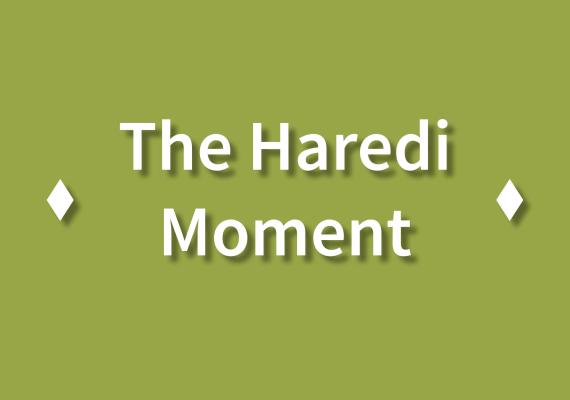
2020 was an especially prominent year for Haredim. The COVID-19 (Coronavirus) crisis, together with the U.S. Presidential election, featured a much more visible and seemingly defiant public presence by Haredim and, concomitantly, brought an enormous amount of new public attention to them. This moment yielded a different face of Haredi Judaism than the quiet and sequestered enclave society of years past.
How and when did this happen? When did Haredim in the United States abandon their pragmatic transactional politics for a bold, libertarian Trumpism? And both in the U.S. and in Israel, did they did really leave behind their erstwhile medical savvy and commitment to pikuah nefesh (saving a life) for a proud resistance to science?
Complex answers lie behind these questions. To help address them, JQR is pleased to sponsor this timely online forum on “the Haredi Moment” to which we have invited a group of outstanding scholars who have spent their careers studying Orthodox Judaism and Haredim in Israel and the United States. The forum consists of nine essays by these scholars, which we divided into three over the course of three weeks. The short essays reveal the distinctiveness, diversity, and challenges of Haredi life—and set in place a multidimensional perspective that resists the twin ills of reductionism and exoticism that often attend popular representations.
This week we are pleased to present the third and final part of the forum, featuring Orit Avishai, Itamar Ben-Ami, and Joshua Shanes discussing far-reaching changes in self-perception, societal mission, and gender identities in the Haredi world, set against (and at times in tension with) a deeply ingrained political conservatism that extends from liberal to traditionalist ends of the Orthodox spectrum.
Part 1 featured Ayala Fader, Samuel Heilman, and Shaul Magid discussing changes in leadership and notions of authority in the Haredi world, as well as shifting attitudes to and uses of science and technology.
Part 2 featured Netta Barak Corren and Lotem Perry-Hazan, Lea Taragin-Zeller, and Nechumi Yaffe and Shuki Friedman discussing the complex and ever-shifting dynamics between the Haredi community and the state in Israel, as well as the need for a new mode of communications between them.
Anticipating the LGBTQ Moment in Haredi Communities
Orit Avishai
Haredi Jews made headlines this past year for defying COVID regulations across three continents. Haredim in Brooklyn, Jerusalem, and London were photographed congregating in the streets, synagogues, and event halls to pray, celebrate holidays and weddings, mourn the dead, and protest. When the 2020 American election cycle heated up, Haredim did not just vote for Trump en masse. Breaking from a history of transactional political engagement, Haredim enthusiastically joined a political camp that skews White, Christian, and nationalist.
I leave reflections on this Haredi moment’s antecedents and implications to others. What concerns me here is the lens many scholars are using to tell the tale of this moment—public visuals do not a whole story make. Religious Studies scholar Michal Raucher urges observers of Haredi life to expand their lens beyond a narrow set of sites of Haredi cultural production and identity formation.[i] Narrow sites, she argues, obscure larger dynamics of Haredi life. That is, to identify and make sense of transforming communal norms and the fractures, tensions, and frictions of the moment, it would behoove us to expand from, say, the yeshiva and the synagogue (per Raucher) and the streets and COVID defiance (per observers of the current moment) to the home, the workplace, the health clinic, and everyday life. Doing so may reveal simmering doubt, defiance of internal authorities and alliances with seemingly contradictory external ones, new patterns of knowledge production and consumption, and shifting relationship to the state: hidden arenas that are potent sources of social change of the magnitude we witnessed in 2020. To demonstrate what an expansive lens makes possible, I offer a preliminary reflection on one such arena: a nascent conversation about gender and sexual diversity in Haredi communities.
Twenty years ago, Sandi DuBowski’s documentary Trembling Before G-d broke the silence surrounding gay and lesbian Orthodox Jews. Recounting tales of pain, silence, and fear of ostracization, most participants were masked and anonymous on screen as they had been in their lives. On the face of it, Haredi communities’ approach to gender and sexual non-conformity has not changed much since. Abby Stein, a transgender woman from Brooklyn who had been ordained as a rabbi before coming out, described similar sentiments in 2015.[ii] But if we look beyond the streets, yeshivas, and synagogues into living rooms, anonymous chatrooms, and private WhatsApp groups, we encounter a different story.
My forthcoming book, Queering Orthodoxy (NYU), documents an astounding shift in the Israeli Modern Orthodox community’s approach to LGBTQ persons. From a categorical denial that Orthodox persons can “be” gay, lesbian, bisexual, or transgender and near-universal embrace of conversion therapy, Orthodox thought leaders—and many lay Orthodox people—have come to exhibit a range of views about tolerance, acceptance, and plausibility of Orthodox LGBTQ existence. Most recently, Dr. Rabbi Benni Lau issued guidelines intended to help observant LGBTQ Jews manage their family lives within religious communities.[iii]
I do not suggest that anything of this sort is in the offing for Haredim. However, given porous boundaries across Orthodox groups and dynamics within Haredi communities, the potential for a changed tune is not beyond the pale. Conversations that begin in Modern Orthodox circles often spill over into Haredi ones. Indeed, one of the most interesting developments in Haredi society, especially in Israel, is the rise of a young cohort of women who challenge the Haredi social order not only vis-à-vis employment and education (a necessary evil) but also its domestic arrangements, women’s political representation, and even ritual practice.[iv] Homegrown challenges to gendered arrangements have long been a precursor to broader awareness regarding gender and sexuality.
There is evidence that this is already happening. In Israel, support groups for LGBTQ persons from religious backgrounds run by LGBTQ organizations such as Jerusalem Open House and Iggy, an LGBT youth organization, have long catered to Orthodox and Haredi persons alike. Bat Kol, the lesbian women’s organization, has offered dedicated and discreet support groups for Haredi women since the mid-aughts. Havruta, the gay men’s organization, has been less consistent but now also offers such support. Underground study and support networks date back several decades. Though private, these spaces are as intensely political as they are personal, fomenting a collective consciousness, a new vocabulary, and cultural norms. Though the circles of the Proud Religious Community (Kadag) in Israel is comprised predominantly of Modern Orthodox Jews, and many of the Haredim in its midst are disaffiliated, some Haredi LGBTQ persons are pushing back through their activism and in their daily lives. One formerly Haredi lesbian told me that she planned to raise her children with an affinity toward her community of birth. Another insisted that, at least for women, Haredi life could be compatible with monogamous same-sex families. Several had not severed ties with their families; a handful have convinced their parents to reach out to Tehila, an organization that supports parents of LGBTQ persons. The key is that these dynamics are led by insiders who are translating and adapting what they have learned from the general Proud Religious Community for Haredi audiences.
One of Abby Stein’s stated goals is to make Haredi communities more transphobic. This may sound counterintuitive—why promote hate? But silence, Stein argues, is more dangerous than transphobia, because it denies existence. By this metric, Haredi communities have come a long way. The Jerusalem Pride Parade routinely attracts Haredi leaders’ wrath,[v] and prominent Haredi leaders publicly denounce LGBTQ persons, often directing their most damning comments at Orthodox same-sex attracted persons (throw away your kippa, a chief Rabbi of Jerusalem demanded in 2019).[vi]
Granted, these debates have thus far not found their way to Haredi media, where silences still abound. Abby Stein lacked a vocabulary to name her experience; she was twenty when she discovered what “transgender” meant when she snuck on the internet in a mall bathroom. One activist told me how outreach efforts to Haredi youth in the mid-aughts in Israel centered on placing informational stickers in discreet places known to be frequented by Haredi teenagers. But with increasing access to the internet and social media—a process accelerated by the COVID crisis[vii]—Haredi persons, and especially younger ones, are finding their way to information online.
None of this is to suggest that we should expect “firsts” (ordination of a gay rabbi, same-sex Haredi weddings) anytime soon. But if history and dynamics in other communities of faith are a guide (Orthodox Jews are hardly alone in this moment of reckoning with gender and sexual diversity),[viii] Haredi grappling with these questions will soon spill out into full view, making these arenas impossible to ignore. Perhaps there will not be a clear “moment” of the magnitude we witnessed in the streets in 2020, but gender and sexual revolutions typically begin as slow-simmers before they erupt. Observers of Haredi life should pay more attention to this arena.
Orit Avishai is a Professor of Sociology and Women, Gender, and Sexuality Studies at Fordham University. Her book, Queering Orthodoxy: The Battle for Judaism’s (Straight) Soul in Israel is forthcoming from NYU Press.
Haredim in Israel: No Longer a “Society of Learners”
Itamar Ben Ami
A close look at contemporary ultra-Orthodox society in Israel reveals a confusing situation. On one hand, Israeli Haredi society is far more exposed to the outside world than in the past. A prominent example is that the majority of Haredi households now have an internet connection—a trend that has strengthened during the coronavirus pandemic. On the other hand, precisely at the point when the Haredi connection to its surroundings is increasing, the community seems to be becoming less liberal. This may be demonstrated by the fact that, in recent years, Haredim have become the most trusted partners of right-wing governments; by their mass refusal to obey the restrictions related to COVID-19; and by their increasing tension with the general public, which reached a peak in the riots against the police in Bnei-Brak in January.
This dialectic between integration and confrontation suggests that the analytical tools often used to understand Haredi society are no longer relevant. For years Haredi society in Israel was studied as a group that devoted all its resources, both spiritual and practical, to a revival of the European Torah world that had been destroyed in the Holocaust, a project that the late Menachem Friedman described as a “society of learners.” Haredi men studied Torah exclusively and refrained from worldly pursuits, while Haredi women were sent to work in order to support their Torah-scholar husbands. Alternative models describing Haredi society as “a society of sanctity” (Nava Wasserman) or an “enclave culture” (Emmanuel Sivan) similarly stressed the ultra-Orthodox community’s effort to build walls around itself as protection from the surrounding society.
These models, with their focus on the seclusion of the Haredi community and its separation from secular society, only partially explain contemporary Haredi society, which does not seclude itself from the Israeli public sphere but is totally exposed to it. The conceptual problem, therefore, is how to understand the nature of Haredi involvement. On the one hand, Haredim are part of the public sphere. On the other hand, their involvement does not signify “integration” into the public sphere, but rather rejection of the neutral and liberal premises undergirding it. Haredi presence in the public sphere seems often to promote hostility and distancing, rather than integration and rapprochement. We must therefore seek an alternative theory for the relationship of Haredi society with its surroundings, whose logic is characterized neither by seclusion nor by integration.
My suggestion is to conceptualize present relations within the Haredi community before examining the relationship of Haredim to their surroundings. In recent years there has been a fundamental revolution in the way the community is organized. Here are four examples: First, the appearance of the Jerusalem Lithuanian faction, whose religious radicalism encourages it to undermine established (and pragmatic) Haredi politics and to alter political strategies (for example, by protesting not only in their own neighborhoods, but by blocking traffic in secular neighborhoods). Second, the existence of volunteer and charitable organizations that mobilize many young Haredim to help the entire Israeli public (Yad Sarah, Zaka, Hatzala emergency medical services, etc). Third, the development of a robust Haredi feminist movement, which grants women public status within the community. Fourth, the appearance of “modern Haredim,” who participate in the job market, the army, and higher education.
While from an ideological perspective it seems that these groups do not agree on anything (the radical Jerusalem faction and modern Haredim are at opposite ends of the spectrum, for example), on the practical level they exhibit more similarities than differences. In many ways, Haredi society is becoming less traditional and more democratic in nature. While previously the Haredi community was organized in a hierarchical fashion, today it is becoming younger, more mobile, and more activist. In all of the above examples, young Haredi forces are beginning to act independently, to oppose the accepted hierarchy within the community, and to exercise their power directly rather than through non-elected representatives.
The new Haredi generation is therefore questioning the traditional hierarchical “community,” and is re-shaping Haredi “society” in a more open and non-hierarchical way that enables mobility and activism. What kind of a relationship with the surrounding world is the new Haredi activism promoting? It is clear, on one hand, that the mobile Haredi forces are operating within the public sphere rather than withdrawing from it; but, on the other hand, they neither share the secular ideology nor see themselves obliged to accept the liberal logic that stresses the neutrality of the public sphere. The involvement of many Haredim is guided by a vision of the good life that aspires to shape the public sphere according to religious demands. It is this spirit that pushes the encounter between Haredim and other groups in the direction of confrontation rather than rapprochement.
I therefore propose understanding Haredi society today as a group that is fighting to preserve its Haredi identity in light of its greater participation in the public sphere. If the “society of learners” preserved its identity by withdrawing from its surroundings, a host of factors—the spread of the internet, the decline in the authority structure of the community, and processes of democratization—push Haredi society to define itself through involvement in the public sphere. It is precisely the threat posed by the neutral (and secular) public sphere that promotes an anti-liberal identitarian politics, according to which many Haredim feel compelled to fight for display of their identity in the public sphere.
The Coronavirus pandemic has revealed that secular and Haredi groups share the same space and affect one another by their conduct. In this sense, “the state of emergency” exposes the truth about the putatively normal: Haredim have found themselves, for a variety of reasons, as full partners in society, which is precisely why they must aim to change it.
Itamar Ben Ami is a doctoral student at the Hebrew University and a research fellow at Humboldt University’s faculty of theology.
The Orthodox Moment
Joshua Shanes
Haredi Jews are in the spotlight, widely covered in popular media and increasingly the subject of serious academic scholarship. Already a year ago, the surprise American success of the Israeli television program Shtisel and the Netflix film Unorthodox—along with other “off the derech” literature (i.e., memoirs of formerly Orthodox Jews)—suggested growing interest in these communities on the part of outsiders. The explosion of ultra-Orthodox protests against COVID restrictions last summer, combined with their pronounced support for Donald Trump, led to a tidal wave of interest. This is undoubtedly a “Haredi moment,” but it is one that goes beyond only the Haredim and requires a broader consideration of Orthodoxy as a whole.
This phenomenon already burst into popular discourse in 2016 when non-Orthodox Jews voted against Trump in higher numbers than almost any other demographic, while Orthodox Jews swung sharply red. Those numbers grew even more pronounced last year. 2020 exit polls are contested, but it seems only about 10 to 15 percent of non-Orthodox Jews voted for Trump, while Orthodox support ranged from 50 to 60 percent of the more integrated communities, to 80 or 90 percent of the ultra-Orthodox. Voting records from 2020 showed bright red islands in Orthodox neighborhoods from Kiryas Joel to New Square, from Borough Park to the more Modern Orthodox communities in the “five towns” of Long Island. Moreover, this support manifested not just in numbers, but in intensity as well. In many communities, support for Trump was assumed and socially rewarded while opposition was mocked.
The distinction between these groups is increasingly growing dimmer. As Sam Heilman and Adam Ferziger have argued, Modern Orthodox Jews are “sliding to the right” (in Heilman’s words)—increasingly rejecting modern culture and moving towards ever stricter interpretations of Jewish ritual—while centrist and ultra-Orthodox Jews are more comfortably engaging with the outside world.[ix] Most striking, however, is that the groups are manifesting shared political sympathies and a shared expectation, new to both communities, that the secular government be shaped according to their beliefs. This is true both in terms of American priorities like school vouchers, “religious freedom” rulings, and restrictions on abortion access—goals they share with Christian allies—and in their shared animosity towards Palestinians and support for Jewish supremacy in “Greater Israel.”
Admittedly, Modern Orthodox Jews have displayed a decidedly more positive attitude towards science and social responsibility during this pandemic than their Haredi counterparts, and this may explain in part their less pronounced support for Trump in the last election.[x] Nevertheless, this ethnonationalist worldview is hardly unique to Haredi and centrist Orthodoxy, where one might expect a greater comfort with Jewish moral exceptionalism verging on supremacism and religious fundamentalism. Indeed, paradoxically, it is the more liberal Orthodox—who pursue progressive religious views on gender, for example—whose fervent Zionism often leads them to express more radical and illiberal views about Israel. This can then translate into similarly illiberal politics and alliances in America.
For example, Rabbi Avi Weiss, the founder of the liberal “Open Orthodoxy” movement, has been a consistent advocate of Jewish illiberalism in the Israel context, comparing then Israeli Prime Minister Yitzhak Rabin to Kahanists for wanting to remove Jews from the West Bank, and calling Palestinians by the incendiary metaphor of “Amalek.” A focus on superior Jewish claims to the entire land and a glorification of Jewish power anchor his recent memoir, despite its appreciation of romantic love and call for humanism.[xi] As a result, it is hardly a surprise that he has grown more outspoken against moderate left (particularly African-American) politicians for their insufficiently rightwing views of Israel.[xii]
Similarly, Shlomo Riskin, chief rabbi and architect of the settlement of Efrat, is perhaps the most prominent leader of progressive Orthodoxy in Israel. Fighting the Israeli Chief Rabbinate on questions of gender and acceptance of less religious Jews, Riskin—who once labeled President Obama the Haman of our generation—celebrated Trump’s election as “a victory for the common American.” Riskin is a long-time and prominent ally of the Christian right, particularly John Hagee and his CUFI (Christians United for Israel) organization. Riskin shares with Hagee and his followers a profound conviction that “radical Islam” is the principal threat to Jewish and Christian safety, and that Israel is an outpost of America fighting on that front.
Nearly all of the Orthodox camps—modern, centrist and Haredi—increasingly see these political views as a key part of what defines Orthodox boundaries. This impulse has deep roots in Europe. There is a long history of Orthodox organizations allying with conservative, authoritarian, and even fascist leaders against “the left,” and manifesting little regard for other Jews. It is true that the Polish members of Agudath Israel, and even more so their Hungarian ultra-Orthodox rivals, strongly opposed German neo-Orthodoxy’s embrace of secular studies and acculturation. Nevertheless, all of these groups shared a basic conservative political outlook and preference to ally with right-wing, even antisemitic political movements rather their social democratic competitors.
For example, although Samson Raphael Hirsch and Ezriel Hildesheimer spoke the language of progressive ideals and democracy, by the 1880s—precisely when political antisemitism became a serious factor—the German Orthodox were a fundamentally conservative political force. They eventually threw their weight behind the Catholic Zentrum party (the Christian conservatives of that time) even as it openly embraced antisemitism and pushed antisemitic candidates. “In the long run,” writes Mordechai Breuer, “the common interests of Orthodoxy and the Zentrum in political questions regarding schools and religion overcame all qualms, and after [1906 they] ... remained loyal to the party and did not change this attitude even when Zentrum allied itself with the strongly anti-Semitic Conservatives in 1912.” Meanwhile, the Orthodox press there branded the social democrats “traitors to the country” and wrote that the Jewish socialists were no Jews.[xiii]
The same approach manifested itself throughout pre-war Orthodoxy. Machsike Hadas (“Upholders of the Faith”), the first Orthodox political party, founded in Galicia in 1878, allied itself with Polish conservatives, the elite power in Galicia, against liberals, Social Democrats, and the Ukrainian nationalists.[xiv] Russian Orthodox leaders attempted to reach a rapprochement with the Tsar at the height of his antisemitic repression, expressing shared animosity towards leftist Jews in the hopes of winning political concessions.[xv] The Polish Aguda backed the conservative, business-friendly Piłsudski regime after his overthrow of Poland’s democratically-elected government in 1926.[xvi] And in Germany, the Aguda and the Free Association for the Interests of Orthodox Judaism wrote Hitler himself in October, 1933 to declare their loyalty to his regime and their shared hatred of Marxist materialism and Communist atheism, including a denunciation of leftist Jews![xvii]
This political orientation has become highly relevant today as scholars work to understand the seemingly sudden support of Orthodox Jews for the radical right, in Israel and particularly in the United States. American Orthodoxy today, like much of Christianity, has increasingly coalesced around an ethnonationalist identity that views the political right and its ultranationalist worldview, both in America and in Israel, as a religious foundation united against the threat of the secular left.[xviii] It has increasingly absorbed these nationalist values into the center of its religiopolitical identity as it celebrates the ethnic aspects of Jewish tradition over the prophetic and rabbinic traditions of humanism and social equality.
This political tribalism blends in new ways with the growth both in Israel and the United States of ethnonationalist strands of Zionism, which are particularly pronounced among Orthodox Jews. The anti-Zionist consensus of most Orthodox Jews a century ago has almost totally evaporated in favor of a new blend among ultra-Orthodox: a technical anti-Zionism alongside a de facto “Israelism” (support for “Greater Israel” combined with antipathy towards Palestinians). The once-prevalent division regarding Israel between Haredim and the Modern Orthodox is falling away. To be sure, the former still deny the theological significance of the secular Israeli state (while working to maximize its own benefits), while religious Zionists insist that the state is the manifestation of messianic redemption, or at least a holy endeavor whose religious character must be ensured. Nevertheless, “progressive” Orthodox Jews and Haredim alike have made a Faustian bargain with Evangelicals and other White nationalists, including open antisemites, on behalf of illiberal priorities in America and Jewish power in Israel.
This turn of Orthodoxy toward decidedly illiberal partners and stances is not new. It has a pre-history. Only by considering the shared history of pre-war Orthodox politics and its comfort with fascism and authoritarianism, combined with the converging Israelism of the entire spectrum of Orthodoxy today, can we understand this current “Orthodox moment.”
Joshua Shanes is an associate professor of Jewish studies at the College of Charleston.
[i] Michal Raucher, “Ultra-Orthodox Jews from the ‘Margins’: Revisiting Book Tradition.” Forthcoming in AJS Review.
[ii] Abby Stein, Becoming Eve: My Journey from Ultra-Orthodox Rabbi to Transgender Woman (New York, 2019).
[iii] Tzvi Joffre, “Rabbi Lau Releases Guide for Religious LGBTQ+ Jews: Not Good to be Alone,” Jerusalem Post, October 12, 2020.
[iv] For example, see the collection of papers in Sylvia Barack Fishman, Love, Marriage, and Jewish Families Today: Paradoxes of the Gender Revolution (Waltham, Mass., 2015) and The Feminism and Art of Jewish Orthodox and Haredi Women, special issue of Shofar 38 (Summer 2020).
[v] Madelaine Adelman, “Sex and the City: The Politics of Gay Pride in Jerusalem,” in Jerusalem: Conflict and Cooperation in a Contested City, ed. M.E. and M.F.E (New York, 2014), 233–60.
[vi] https://www.kipa.co.il/חדשות/944209-הרב-עמאר-במתקפה-על-להטבים-דתיים-שיזרקו-את-הכיפה-פושעי-יש/
[vii] Lea Taragin-Zeller, Yael Rozenblum, and Ayelet Baram-Tsabari, “Public Engagement with Science Among Religious Minorities: Lessons From COVID-19,” Science Communication 42. 5 (2020): 643–78
[viii] See, for example, the reminiscence of evangelical Pastor David P. Gushee in Changing our Mind (2014).
[ix] Sam Heilman, Sliding to the Right: The Contest for the Future of Jewish Orthodoxy (Berkeley, 2006); Adam Ferziger, Beyond Sectarianism: The Realignment of American Orthodox Judaism (Detroit, 2015).
[x] Joshua Shanes, “‘Hands Up! Don’t Shoot! We Want Summer Camp!’: Orthodox Jewry in the Age of COVID-19 and Black Lives Matter,” Jewish Social Studies 26 (2020): 143–55.
[xi] Avi Weiss, Journey to Open Orthodoxy (New York, 2019).
[xii] Last year, for example, he published an attack against Rev. Raphael Warnock on the eve of the Georgia election, accusing him of antisemitism akin to David Duke and Louis Farrakahn. Recall that Warnock’s opponent campaigned with leaders of the KKK and endorsed the overtly antisemitic and violent Q-Anon conspiracy.
[xiii] Mordechai Breuer, Modernity within Tradition: The Social History of Orthodox Jewry in Imperial Germany (New York, 1992), 337.
[xiv] Rachel Manekin, “The New Covenant: Orthodox Jewish Political Alliances with Polish Catholics in Galicia (1879–1883),” Zion 64 (1999): 157–86 (Hebrew).
[xv] Vladimir Levin, “Orthodox Jewry and the Russian Government: An Attempt at Rapprochement, 1907-1914,” East European Jewish Affairs 39 (2009): 187–204.
[xvi] Bacon, The Politics of Tradition: Agudat Yisrael in Poland, 1916–1939 (Jerusalem, 1996), 265–72.
[xvii] Marc Shapiro, Between the Yeshiva World and Modern Orthodoxy: The Life and Works of Rabbi Jehiel Jacob Weinberg 1884–1966 (London, 1999), 225–33.
[xviii] In part this is due to similar forces, such as conservative talk radio, which is widely consumed among all Orthodox Jews and has played an oversized role in transforming the political (and Christian) right. See Brian Rosenwald, Talk Radio’s America: How an Industry Took Over a Political Party that Took Over the United States (Cambridge, Mass.,, 2019).
